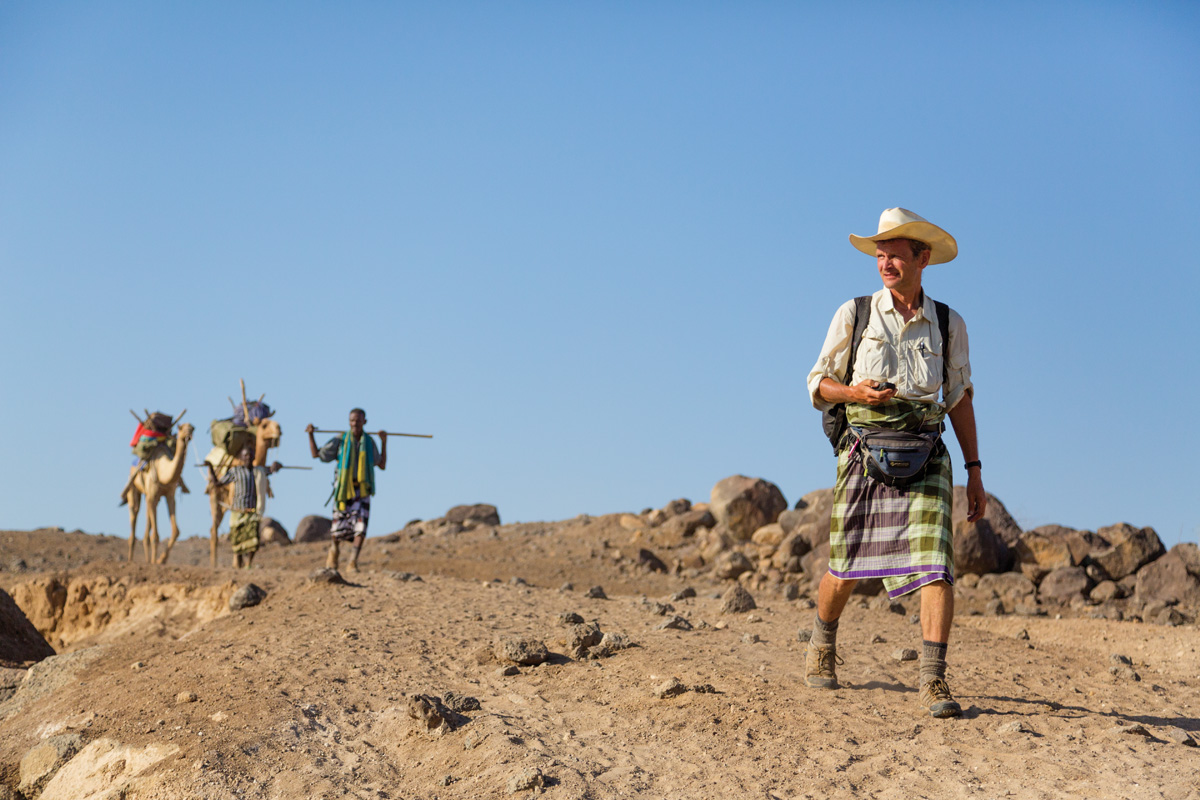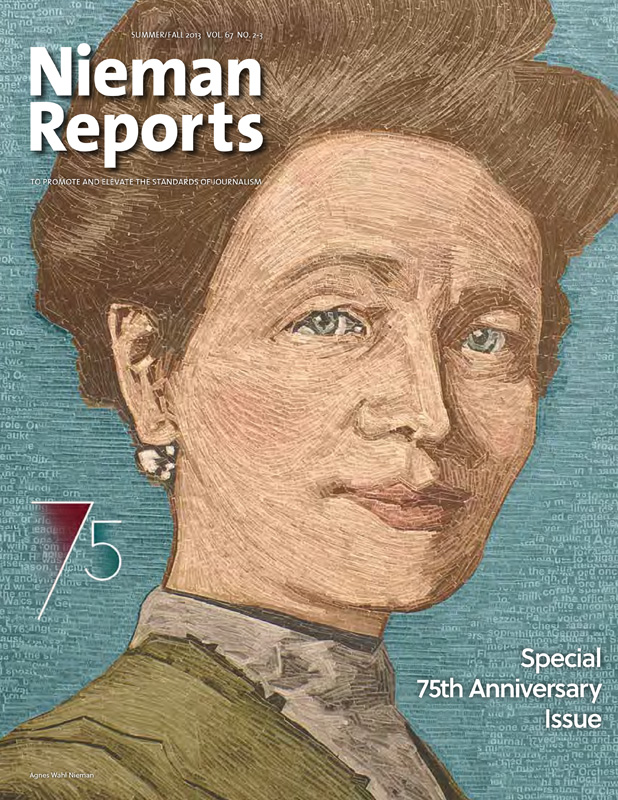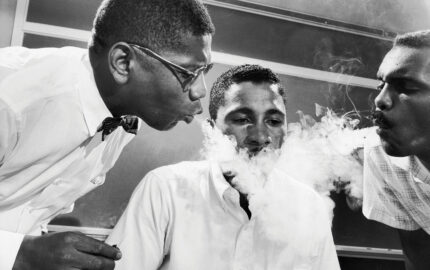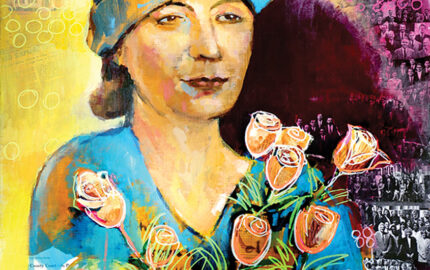A two-time Pulitzer Prize winner who has canoed through rebel-controlled regions of the Congo, Salopek is walking across the world, tracing the path of the first human diaspora out of Africa
I was plodding in tight circles in the Ethiopian desert recently with a satellite phone jammed to my ear. This was a familiar dance. I’ve worked as a foreign correspondent for years. Pacing the unwired fringes of the globe while shouting into a handset (“Can you hear me? I’m moving my location. Can you hear me now?”) comes naturally.
What was different—profoundly so—were the people on the other end of the line. They weren’t editors at U.S. newspapers or magazines. Instead, it was a conference call with my new journalism partners: a loose intellectual posse I’d managed to cobble together during my Nieman Fellowship. It included Liz Dawes Duraisingh, from Project Zero, an independent learning think-tank at the Harvard Graduate School of Education. There was Jeff Blossom, a digital cartographer at Harvard’s Center for Geographic Analysis. Ethan Zuckerman, the irrepressible director of the MIT Center for Civic Media, was listening in. And so was Patrick Wellever, a talented Web technologist at MIT’s Knight Science Journalism Program.
It struck me then, as I squinted across the Rift Valley of Africa, just how truly revolutionary my Nieman had been. It had collapsed the defensive walls that I had raised around myself as a besieged print journalist. It opened up vistas of collaboration that merged foreign reportage with mapmaking, reporting with teaching. In an age of unprecedented media upheaval, the Nieman handed me a wonderfully eclectic survival kit.
Now I’m a National Geographic Fellow, walking across the world for seven years as part of a narrative journalism project called the Out of Eden Walk, which is funded by the Knight Foundation. Using deep history as a mirror for current events, I’m following the pathways of the first human diaspora out of Africa to the tip of South America, reporting stories as I go. The goal of this radical experiment in ambulatory journalism is to help sustain international reporting by framing the important global stories of our time as a journey, a shared quest for meaning.
Salopek's narrative journalism is featured on Nieman Storyboard Like other Fellows, I probably worked harder at Harvard than I ever did in the field. I pulled 20-hour days and often fell asleep in my clothes (an experience remarkably like foreign corresponding). But it took a staticky phone call in the scalding dun wastes of the Afar Triangle of Ethiopia to appreciate where—and how incredibly far—those lumpy brick sidewalks of Cambridge would lead me.




